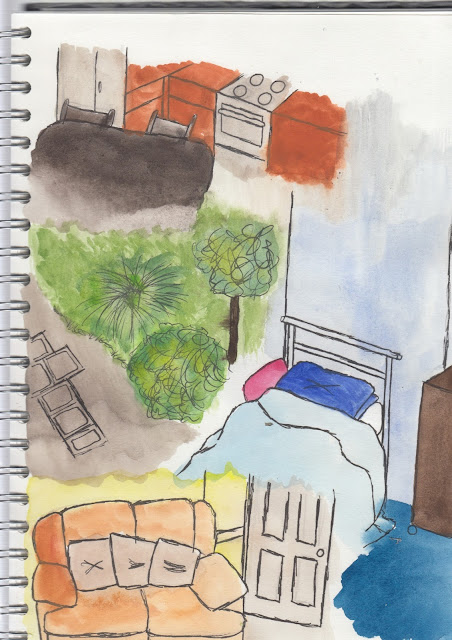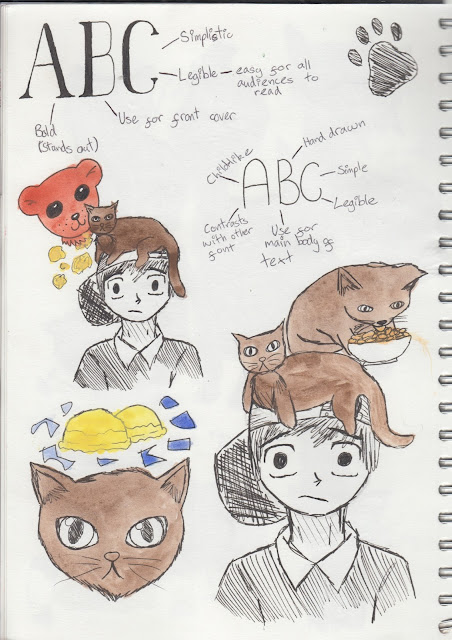For my first mid-point draft of the cover and pages I am creating for my final product, I decided to use watercolour and fine liner. I also used a simplistic design like E.H. Shepard would have done and added colour to the backgrounds of the front and back cover. I drew simplistic illustrations for the characters and used lines to plot out where the main body of the text will be placed.
For the front cover, I used the illustration of a cat's eye as the cat is one of the main focuses of the book. I made the eye green in order to make it contrast with the brown-black of the back ground as well as the black font of the title. I considered a bold, modern typeface that catches the eye and stands out as one of the main aims for creating a cover for a book is to catch the eye of a prospective buyer.
For the back cover, I used a simplistic illustration of a boot in order to link with the title and create consistency. I also used warm browns and reds for the boots and a pale, muted blue background to create contrast not only with the illustration and the background, but also with the blurb which will be in a black/dark typeface.
I used simple illustrations when designing the two DPS as I don't want complicated illustrations that will distract from the narrative. I also used illustrations that link directly to the narrative of the book and simple colours that are saturated but not so saturated that they detract from the main body text. The backgrounds are white so that the black font the narrative will be written in stands out against the backgrounds and create a strong contrast as well as with the illustrations. I made the part of the narrative that is repeated throughout the book bigger than the rest of the writing will be as I want it to stand out and contrast with the organised layout of the pages. This is also why I chose a messier, hand drawn typeface for that particular element of the narrative.









































